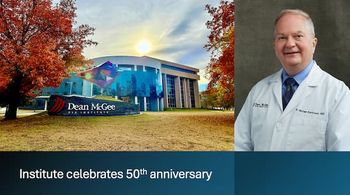
Long-acting azithromycin safe, effective in treating bacterial conjunctivitis
Fort Lauderdale, FL-An investigational longacting solution of 1.0% azithromycin (AzaSite, InSite Vision) is safe, well tolerated, and effective for the treatment of bacterial conjunctivitis in pediatric patients and adults, according to the results of pivotal phase III clinical trial involving placebo and active controls.
Fort Lauderdale, FL-An investigational longacting solution of 1.0% azithromycin (AzaSite, InSite Vision) is safe, well tolerated, and effective for the treatment of bacterial conjunctivitis in pediatric patients and adults, according to the results of pivotal phase III clinical trial involving placebo and active controls.
Dr. Abelson reported the results from the multicenter, double-masked, activecontrolled study in which patients were randomly assigned to 5-day courses of the azithromycin product or tobramycin 0.3%. The long-acting azithromycin solution was administered twice daily (morning and bedtime) for 2 days and then once in the morning for the last 3 days of treatment. Tobramycin was administered on a q.i.d. dosing schedule on all 5 days. Patients in the AzaSite group were given additional bottles of vehicle to use each day in order to maintain the blind study.
"Options for treatment of ocular infections have been limited to a few classes of antibiotics," said Dr. Abelson, associate clinical professor of ophthalmology,Harvard Medical School, Boston. "However, having a broader range of agents available would be valuable to avoid overuse that promotes development of resistance and thereby can limit the utility of available agents for treating serious infections.
"In particular, it would be useful to have an alternative that could be used to treat bacterial conjunctivitis, which is the most common bacterial ocular infection, so that other,more potent agents could be reserved for managing keratitis or endophthalmitis," he said.
"Azithromycin offers an antimicrobial spectrum that targets the most common gram-positive and gram-negative causes of bacterial conjunctivitis and has a longstanding safety history established through
years of systemic use," Dr.Abelson continued. "Clinical trial results demonstrate it is effective in treating bacterial conjunctivitis, and this unique formulation with its convenient once- and twice-daily dosing schedule should facilitate compliance. Considering all of its attributes, I expect that once available, this 1% azithromycin product should become the treatment of choice for bacterial conjunctivitis."
Study enrollment
The active-controlled study enrolled 746 subjects at 47 clinical centers. Eligible patients, who were at least 1 year old,were required to have grade 1 ocular discharge and grade 1 bulbar or palpebral conjunctival injection in at least 1 eye with a duration of no more than 3 days. The injection scales used for guiding the clinical evaluation were developed by Ophthalmic Research Associates Inc. (ORA), CRO for the study.
Of the enrolled subjects, 316 patients had positive bacterial cultures, and 170 (54%) of those individuals were pediatric patients (up to 11 years old). The most common pathogens included Streptococcus pneumoniae, Haemophilus influenzae, Staphylococcus aureus, Staphylococcus epidermidis, and other Streptococcus viridans.
Newsletter
Don’t miss out—get Ophthalmology Times updates on the latest clinical advancements and expert interviews, straight to your inbox.


















































.png)


